- Home
- Patrick Robinson
To the Death am-10 Page 5
To the Death am-10 Read online
Page 5
“Thank you, Jimmy,” replied the admiral. “Just wanted to hear the reason again. I must be getting old.”
“Not you, Arnie. ” replied the lieutenant commander. But he was too late. The admiral had already rung off and was staring into the log fire in his study at the big house in Chevy Chase. He was staring at the flames, and thinking of the bomb, and the Boeing, and the endless evil these Middle Eastern fanatics were capable of visiting upon the United States of America.
“Fucking towelheads,” he grunted. “But today belonged to us. We blew out their kamikaze airliner, and we screwed up their airport plan, captured the lead man. And the quicker we get him into Guantánamo Bay, the better I’m going to like it.”
1700 Same Day Mass General Hospital Boston
The Sikorsky Sea King, a Navy search-and-rescue helicopter from New London, Connecticut, came clattering north up the Charles River. It came in a hundred feet above the Longfellow Bridge, banked right over the impressive edifice of Mass General, and landed with polished dexterity on the great hospital’s sixteenth-floor rooftop helipad, atop the Ellison Building.
Commander John Fallon stared out at the assembled crowd that awaited him — six orderlies, six Boston cops, one white-coated doctor, two nurses, and three very obvious CIA men, big tough characters dressed in dark overcoats, narrow-brimmed hats, and thick scarves.
They all surrounded one medical gurney upon which was a tightly strapped hospital patient, lashed to the safety rails with the kind of wide security belts normally associated with the criminally insane, psychopaths like Hannibal Lecter. King Kong would have been hard-pressed to break free.
“Who the hell’s that, the guy on the gurney?” Commander Fallon asked his loadmaster.
“Search me, just so long as he doesn’t get loose with us.”
“No chance of that,” replied Fallon. “Those three CIA guys over there are coming with us.”
The loadmaster opened the door and jumped down onto the roof. The gurney was wheeled over, and the stretcher that rested between the rails was lifted up by the orderlies and the patient carried into the helicopter.
The CIA agents climbed in, the doors were slammed tight, seatbelts buckled, and the Sea King lifted off from the roof. Not a word was spoken, especially by the patient, who had, incidentally, remained totally mute since five minutes past eight that morning, since Pete and Danny had hauled him out of the burning limo.
The helicopter immediately turned southwest, but within minutes came thirty-five degrees left, banking around onto a more southerly course, heading straight for the clear skies above the icy waters of Narragansett Bay and Rhode Island Sound.
The CIA guys sat stone-faced next to the patient as the Navy pilot and his navigator headed out to sea, clattering down the East Coast, exchanging friendly information with the control tower at Groton while they crossed the submarine roads off Block Island.
Commander Fallon again swung the Sea King south, heading out into the Atlantic, leaving Montauk Point on the eastern tip of Long Island to starboard, and staying out to sea all the way down the long New Jersey coastline.
The Sea King made its westerly turn as it reached the wide waters of Delaware Bay and flew swiftly over the eastern shore, making a beeline for Annapolis and then the northern suburbs of Washington, D.C. It flew low directly toward Bethesda, Maryland, and circled the extensive grounds of the National Naval Medical Center.
Commander Fallon could see that the wide concrete helipad below was surrounded by the type of guard strength you might expect for the arrival of a stricken U.S. president, for this place would be his first stop. Indeed, the body of the slain John F. Kennedy had been brought here immediately after Air Force One returned from Dallas.
The great tower of the hospital was Fallon’s landmark, as it had been to generations of Navy pilots ever since its completion a little more than a year after President Roosevelt had laid its cornerstone on Armistice Day, November 11, 1941.
Commander Fallon made his approach into the midst of Navy staff vehicles and police cruisers. He had no idea of the identity of his wounded passenger, but he understood one thing: someone believed this guy was of serious importance. If he’d recognized the big black Humvee parked in a strictly no-go area right at the hospital entrance, he’d have understood better just how important.
Admiral Arnold Morgan was already in residence, sipping black coffee in the private office of the hospital commander, Rear Admiral Adam Roberts. Also in attendance were Lt. Commander Jimmy Ramshawe and Professor Alan Brett. That was the measure of importance concerning Mr. Reza Aghani, currently under arrest, shot, burned, strapped down, and interrogated after a busy morning at Logan.
Aghani entered the hospital on the double, six orderlies running the wheeled gurney through the automatic doors. They were surrounded by three Secret Service agents from the White House, four armed Navy guards, four Washington cops, two nurses, and two doctors.
Once inside, they headed directly toward the section reserved for the President of the United States: five darkened rooms, quivering with ultrasensitive pressure plates on the floor all along the approach. At the entrance to the suite stood two White House agents, direct from the Secret Service Command Post immediately below the Oval Office. They alone knew the numbers that would open the industrial-strength cipher locks which guarded the gateway to the presidential quarters.
And here, in this rarefied interrogation center, as designated by Paul Bedford and Arnold Morgan this very morning, the first-ever non-president of the USA would become a resident. Only briefly. But nonetheless a resident. Mind you, if President Bedford as much as complained of a head cold, Reza Aghani would have been outta there in about one minute, dispatched immediately to some kind of basement lockup. Right now, however, he was in the relative comfort, but high security, of the Presidential Rooms.
As Arnold Morgan had stated earlier today, “I can put up with damn near anything except someone silences this guy with a bullet or a bomb. He’s all we got, and this is a day which someone planned to be another 9/11.”
The orderlies placed Aghani in a bedroom normally reserved for Secret Service agents who might be guarding a sick president. Two armed Navy guards were posted in the room, with two more outside. The terrorist’s first visitor was Admiral Morgan himself, who was immediately followed by Lt. Commander Ramshawe. Instantly, Aghani closed his eyes and sank back into the pillow, as if aware that no one had yet told him this was going to be unpleasant.
“Reza Aghani,” said the admiral, “you are being detained by the United States government as an illegal combatant, more specifically for heading up a terrorist team that tried to blow up a passenger terminal in Logan International Airport. You of course were transporting the bomb.
“You are no longer in the custody of civilians. You are under tight arrest by the United States military. And we have fewer restrictions. The good news for you is that we may stop short of beheading you.
“However, you should not rule out other methods of persuasion. I will be back here twenty-four hours from now, and if you have not told us truthfully what we want to know, I will have you immediately transferred to a military prison and interrogation center. And there you will be subject to more stringent questioning and may be executed.”
Admiral Morgan did not wait for a reply. Nor even to check whether the man understood what had been said. The admiral merely turned sharply on his heel and jerked his head at Jimmy Ramshawe, signaling that he too should depart.
Once outside the room, Admiral Morgan headed immediately to the exquisitely furnished presidential drawing room, slung his overcoat over the back of an eighteenth-century Chippendale chair, and sat down, somewhat luxuriously, in a softly upholstered dark green chaise longue probably worth a hundred thousand dollars.
The cost of refurbishing this room had been some kind of White House joke, ever since thieves had somehow gained entry and stolen around $600,000 worth of antiques, Sheraton furniture, crystal chandeliers, paint
ings, and god knows what else. It had happened on the watch of Jimmy Carter, the no-frills, no-alcohol, cost-cutting president, and, understandably, it embarrassed the hell out of him.
It did not, however, embarrass the hell out of Admiral Morgan, who slipped into the high life as if to the manor born. “Coffee, James,” he commanded. “And see if they can rustle up a few cookies, while we attempt to frighten the truth out of that goddamned little fuckhead with his eyes closed next door.”
“Right away, sir,” snapped Jimmy, adopting the subservient tone of a lieutenant commander to an admiral. “Be right back.”
Jimmy left. The admiral mused. A log fire crackled in the grate. Absently, he reached for the television remote and flicked on Fox News. The entire channel was devoted to the events at Logan that morning, the reporters complaining of a news blackout but revealing that the president would address the nation at 7 P.M.
In the principal part of the newscast, no mention was made of the downed airliner currently resting on the bed of the Potomac estuary. At least not until a small segment on the rest of the day’s news was précised by the female anchor. It was based on a short press release issued by the National Air Traffic Control Center, Herndon. This had stated merely that an unknown, lightly loaded Canadian-based Boeing 737, carrying no U.S. citizens, had vanished from their screens, somewhere out over the Atlantic off the Virginia coast.
Admiral Morgan, who had written the release himself and had the president’s press office transmit it to Herndon, was somewhat smugly pleased. As he had intended, there was no suggestion of what fate had befallen it, no accurate location.
The spectacular-looking young redhead who delivered the broadcast may not have been employed by the television station solely for her vast experience of journalism and international events. But she was very beautiful and confirmed that no details had yet been released.
She then interviewed, on a link, a member of the International Air Transport Association and wondered what the mood was like in their office with a large passenger jet missing. “Is there a sense of failure?” she suggested.
The exec from IATA blinked and said, “I’m sorry. Would you rephrase that?”
“No, well, I mean, it’s kind of your responsibility, right?” she added. “I guess you guys somehow let us down?”
“Ma’am, we do not actually fly the aircraft.”
“No. But they’re your pilot members, right?”
“Fuck me,” said Arnold and hit the OFF button, astounded as ever by the blissful manner in which modern “journalists” are prepared to get something completely wrong, broadcast it to millions, and not appear to care one way or another.
Jimmy returned, followed by a waiter with cookies and coffee. The waiter poured from a priceless-looking engraved Georgian silver coffeepot, which had presumably been standard issue during the elegant age of the Georgian peanut farmer.
“You know, Arnie, I’ve been thinking,” said Jimmy. “This really would have been another 9/11, and that means there must be a very active al Qaeda cell working right here on the East Coast. Because 9/11 was not just one jet aircraft, and they did not intend just one hit on one target: there were four attacks aimed at four different targets, all on one day.”
“And I guess that’s got you thinking there could be another this evening?”
“Darned right it has,” replied Jimmy. “Do you think they could break that little sonofabitch next door in the next hour?”
“Probably not, kid. Our best chance might be in Houston, if they can locate the missing Ramon Salman. But even that’s a long shot.”
At that moment the door opened and the tall, angular figure of the president’s national security adviser, Alan Brett, came into the room. “You ready for the CIA guys, Arnie? I have them outside right now.”
“Gimme five, would you?” replied the admiral. “Have a cup of coffee and tell me your views. We haven’t had much time for a chat.”
“Tell you the truth,” replied the professor, “I’m real nervous they might try to hit us again. This guy next door is an obvious hard man, not scared of us, accustomed to being put under pressure, and full of hatred and defiance. You can tell a lot about a character who simply does not react.”
“He’s pretty small to be an obvious hard man,” muttered Jimmy Ramshawe in his deep Australian drawl. “Doesn’t look to me like he could hold down a baby kangaroo.”
“Guess you could say the same about the diminutive Julius Caesar,” replied Alan Brett with a grin. “And he managed to conquer most of the known world.”
“Well, this bastard had a serious shot at conquering the Boston airport,” interjected Arnold Morgan. “And he must be interrogated as if he’s some kind of a monster.”
“I think the CIA guys know that,” said Alan Brett. “How long have they got?”
“I’m going to tell the president to ship this guy out directly to Guantánamo Bay at noon tomorrow,” said Arnold.
“Then the interrogators right here have around eighteen hours.”
“No more than that,” said the admiral. “But they really should operate as if they’ve got about two hours. Any news on the 737?”
“Just before I left, the president was talking to the CNO. Sounded like the Navy was about to take over the salvage and investigation.”
“And Houston? No sign of Ramon Salman?”
“Not a thing.”
“Okay, Alan. I don’t need to brief the CIA guys. Just tell ’em to get going.”
2030 Same Day The White House
“Nice speech, Paul,” said Admiral Morgan. “Let’s keep the focus on the heroism of the Boston cops, because that’ll shut the media up for a few days — keep ’em prancing around trying to speak to their goddamned relatives and schoolmasters, while we quietly turn the screws on the terrorists.”
“You mean ‘terrorist,’ old buddy. Right now we’ve only got one.”
Arnold Morgan surveyed the interior of the Oval Office and then muttered, “With all the great resources of the American empire at our disposal, we have to be able to find the missing Ramon Salman, and that’s what I’m counting on.”
The president nodded and then added, “By the way, Arnie, you probably could get a job as a press officer if you really tried. You sure as hell threw ’em off the scent of the missing airliner.”
“I was actually thinking of taking out an ad,” replied the admiral. “Lies, evasions, subterfuge a specialty. Expert at vanishing tricks. Morgan the Magician.”
Paul Bedford chuckled. Then he looked up, much more seriously. “Will anyone ever find that aircraft and discover what really happened?”
“Not if I have anything to do with it.”
0200 Saturday 15 January United States Naval Station Norfolk, Virginia
The night was clear, freezing but cloudless, over the world’s largest naval station. A hard frost was already forming all along the 8,000-acre waterfront sprawl, home to the breathtaking oceanic muscle of the United States.
Lights gleamed from the massive nuclear-powered aircraft carriers berthed along the piers, the USS John C. Stennis, George Washington, and Theodore Roosevelt. All of them glowered in the bright moonlight, great bruising veterans of the world’s most troubled regions, frontline keepers of the honor of the United States of America.
There was hardly a sound in the vast naval complex, which in its way is just about landlocked, save for the narrow throughway out of the Hampton Roads, past Old Point Comfort and Fort Monroe to port and Fort Wool to starboard. But tonight the thin freezing air magnified the sounds. The very occasional helicopter landing echoed on the night air; mobilized guard patrols drove slowly to and from the long, frosty jetties. Footsteps sometimes accompanied the watch changes. But none of the forty warships in residence was moving.
At 0200, the incoming tide was rising all the way down the long “inland” coastline, which joins the naval station to the shipyard thirteen miles to the south. And out to the northeast, beyond the protective land
, lies Chesapeake Bay, its waters ebbing and flowing with the tides of the Atlantic Ocean.
But the tide rises silently along the Navy piers, and the sudden throb of four powerful Caterpillar diesels driving a 4,200-hp ship north in the dark caught the attention of anyone who happened to be out in this cold night, either on deck or onshore.
There’s a bush telegraph in Norfolk, and most people knew when any warship was scheduled to clear the station in the small hours and make an exit to the open ocean. But right now, no one had the slightest idea what kind of vessel was steaming straight up the exit channel. Equally, no one much cared. It was just a bit unexpected, even though she was showing all the correct navigation lights and had plainly come up from the repair berths down in the shipyard.
The reason for her late, or early, departure was mainly due to an intense evening of painting that had eliminated every marking that showed this was a Navy vessel.
But now she was “clean,” the 2,880-ton Safeguard-class salvage ship USS Grabber, fully disguised as a civilian, smelling of fresh paint, and moving as fast as her engines would allow. That was twelve knots, and she was being closely followed in line astern by a couple of flatbed Navy barges, self-propelled and in a similar state of newly painted self-denial.
There was no insignia, and in the dawn there would be no Navy pennants flying. This had become, in a few hours, just a tiny fleet from a private salvage company, heading through the night, toward the hottest political hot potato in the entire country; orders of the commander in chief, acting personally on the advice of the Big Man, Admiral Morgan.
On board the lead ship was an extremely unusual cast. There was the normal team on the bridge: helmsman, navigator, watchkeepers, and in this case bosun. But they were all under the command of Bob Wallace, a newly promoted commander, ex-submariner, qualified Navy diver, who’d never been on a salvage ship in his life.
There were also sixteen more divers waiting below, led by Chief Petty Officer Mark Coulson, a U.S. Navy SEAL who had been flown to the Norfolk Shipyard from the SEAL base at Virginia Beach just before midnight. He brought with him an LPO, Ray Flamini, mini-submarine driver, SEAL underwater specialist. There was also a special team of Navy salvagemen and crane operators, men who would handle expertly the steel cables attached to the two big rigs, positioned fore and aft, each capable of a 65-ton dead lift.

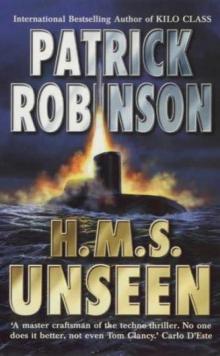 H.M.S. Unseen am-3
H.M.S. Unseen am-3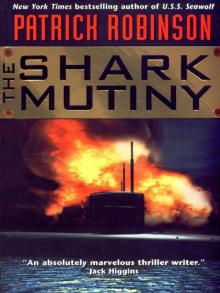 The Shark Mutiny (2001)
The Shark Mutiny (2001)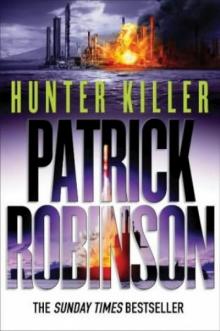 Hunter Killer am-8
Hunter Killer am-8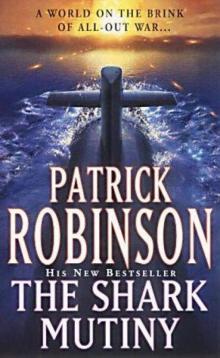 The Shark Mutiny am-5
The Shark Mutiny am-5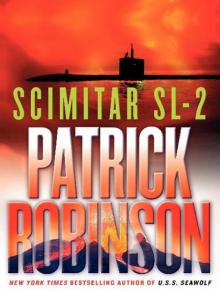 Scimitar SL-2
Scimitar SL-2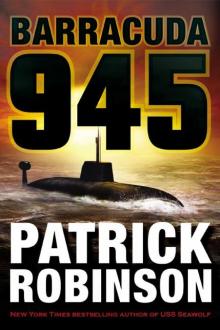 Barracuda 945 am-6
Barracuda 945 am-6 Hunter Killer
Hunter Killer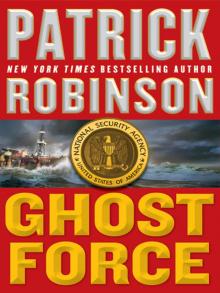 Ghost Force
Ghost Force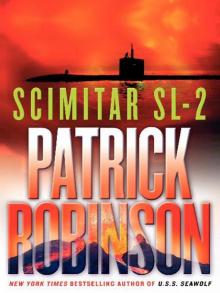 Scimitar SL-2 (2004)
Scimitar SL-2 (2004) Kilo Class am-2
Kilo Class am-2 The Lion of Sabray
The Lion of Sabray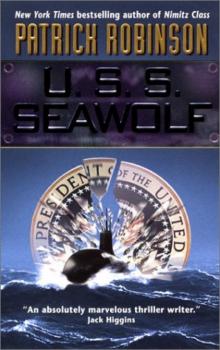 U.S.S. Seawolf am-4
U.S.S. Seawolf am-4 Ghost Force am-9
Ghost Force am-9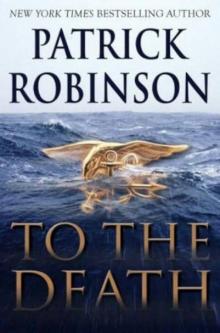 To the Death am-10
To the Death am-10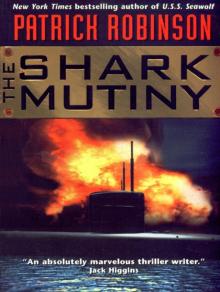 The Shark Mutiny
The Shark Mutiny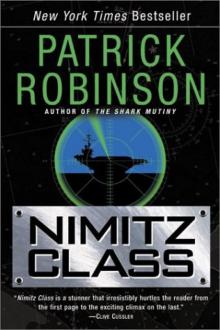 Nimitz Class am-1
Nimitz Class am-1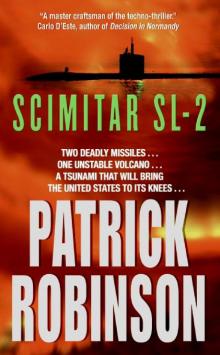 Scimitar SL-2 am-7
Scimitar SL-2 am-7 Barracuda 945
Barracuda 945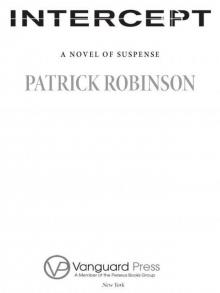 Intercept
Intercept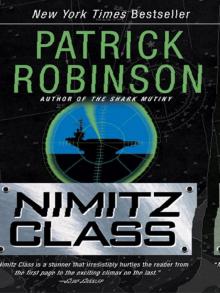 Nimitz Class (1997)
Nimitz Class (1997)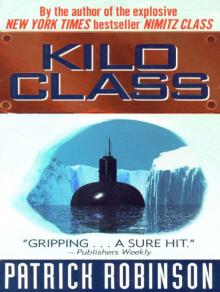 Kilo Class
Kilo Class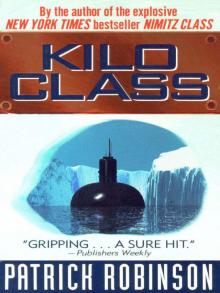 Kilo Class (1998)
Kilo Class (1998) Diamondhead
Diamondhead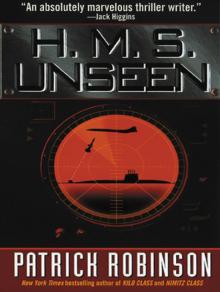 H.M.S. Unseen
H.M.S. Unseen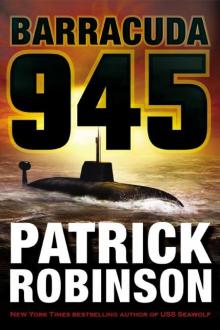 Barracuda 945 (2003)
Barracuda 945 (2003)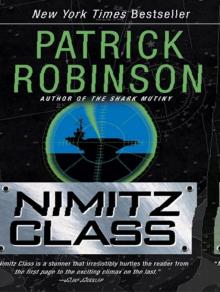 Nimitz Class
Nimitz Class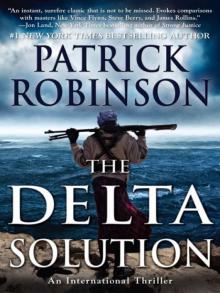 The Delta Solution
The Delta Solution U.S.S. Seawolf
U.S.S. Seawolf